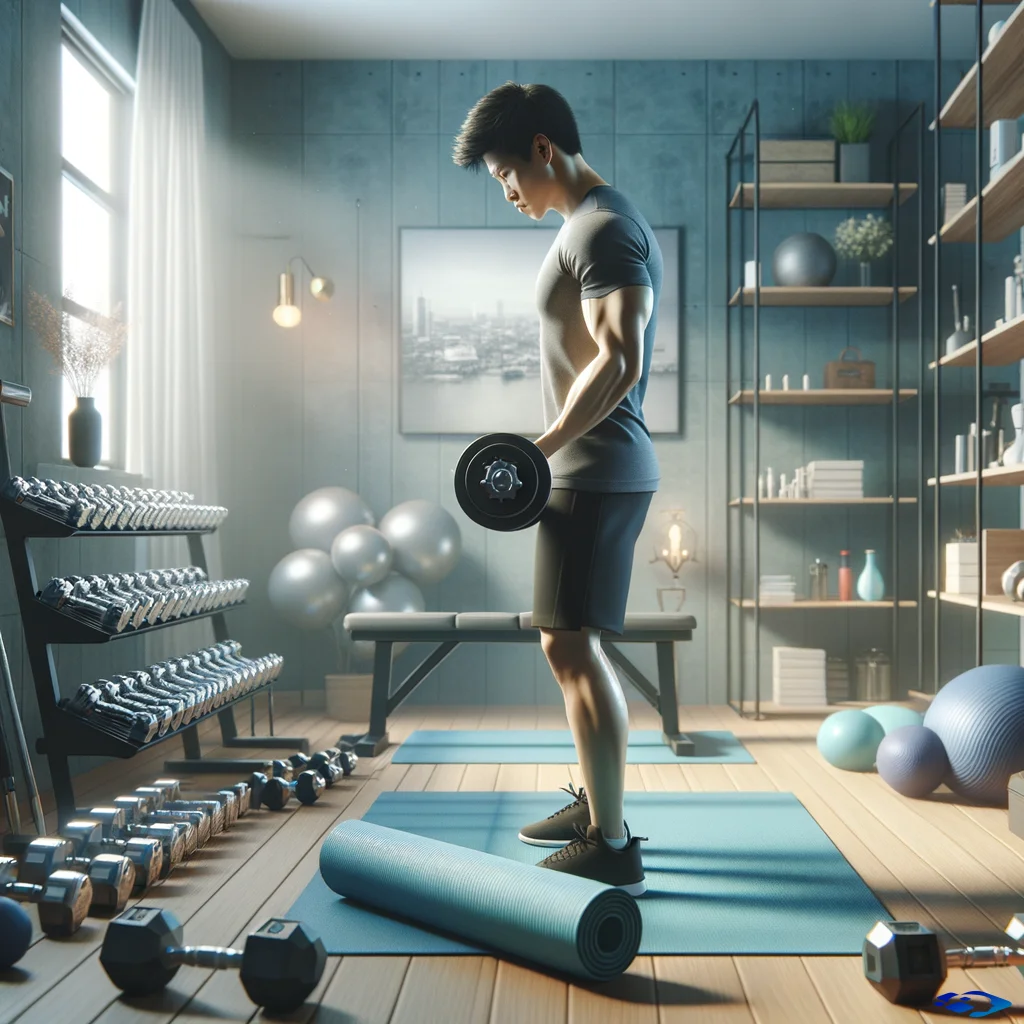Finding time for the gym can be a struggle.It’s frustrating,especially when you’re committed to maintaining strength.What if I told you that your living room could be your new gym?Yes, effective strength training exercises at home are real.This blog uncovers 5 easy but powerful workouts.Get ready to transform any space into your strength-building zone.
Preparing for Your Workout
Before diving into your workout, it’s crucial to set yourself up for success. Here’s how:
Creating a Safe Space
- Select an Area: Find a spacious area in your home where you can move freely without obstructions.
- Clear Hazards: Ensure the floor is clear of any slipping or tripping hazards.
Equipment: What You Need and Alternatives
- Essentials: A yoga mat for cushioning and grip, and resistance bands or weights.
- Alternatives: Water bottles or cans of food can substitute for dumbbells, and a sturdy chair or steps can be used for exercises requiring elevation.
Warm-Up Exercises
Jumpstarting your body with warm-up exercises enhances performance and prevents injuries.
Gentle Jogging or Marching on the Spot
Kickstart your heart rate and loosen up your legs to prepare for the workout ahead.
Arm Circles and Shoulder Rolls
These movements warm up your upper body, especially your arms, shoulders, and upper back, making them ready for strength training.
Strength Training Exercises
Now, let’s delve into the core of your home workout:
Squats
- Proper Form and Technique: Stand with feet shoulder-width apart, lower your body back and down as if sitting in an imaginary chair, keeping your knees behind your toes.
- Variations for Beginners and Advanced: Beginners can start with chair squats while advanced individuals can try single-leg squats for a challenge.
Push-Ups
- Basic Position and Movements: Face down, place your hands a bit wider than your shoulders, and push your body up and down.
- Alternative Forms for Different Levels: Beginners can start with wall push-ups or knee push-ups, while more advanced individuals can attempt decline push-ups.
Planks
- Holding the Perfect Plank: Position yourself in a push-up position, but rest on your forearms. Keep your body straight from head to heels.
- Time Increments and Challenges: Start with 20 seconds and gradually increase the time. Try side planks for an added challenge.
Lunges
- Steps to Perform a Safe Lunge: Step forward with one leg, lowering your hips until both knees are bent at about a 90-degree angle.
- Front, Back, and Side Lunges: Incorporate different lunge variations to target various muscle groups.
Glute Bridges
- Execution and Importance: Lie on your back with knees bent and feet on the floor, lift your hips towards the ceiling.
- Advanced Options with Raised Feet: Place your feet on a raised platform like a bench or a step for an intensified workout.
Cooling Down
Cooling down is as important as the workout itself. It gradually lowers the heart rate and stretches the muscles.
Benefits of Cool Downs
- Promotes Recovery: Aids in the reduction of lactic acid build-up, reducing muscle soreness.
- Prevents Dizziness: Helps in stabilizing the body’s blood flow after a vigorous workout.
Stretching Exercises for Flexibility
Incorporate stretches targeting major muscle groups used during the workout to enhance flexibility and reduce muscle tension.
Creating a Routine
To reap the full benefits, consistency is key.
How to Combine These Exercises
Design a routine that fits your schedule. A 30-minute session that includes warm-up, a mix of strength exercises, cool down, and stretches, performed 3-4 times a week, is a good start.
Tips for Consistency and Progress
- Set Realistic Goals: Start with manageable routines and gradually increase the intensity.
- Track Your Progress: Keeping a log helps in staying motivated and recognizing improvements.
Conclusion
Embarking on a journey to improve your physical strength at home is both empowering and convenient. The key is to start with exercises that are manageable and progressively challenge yourself as you grow stronger. Remember, the only equipment truly necessary is your determination and commitment. Happy training!
